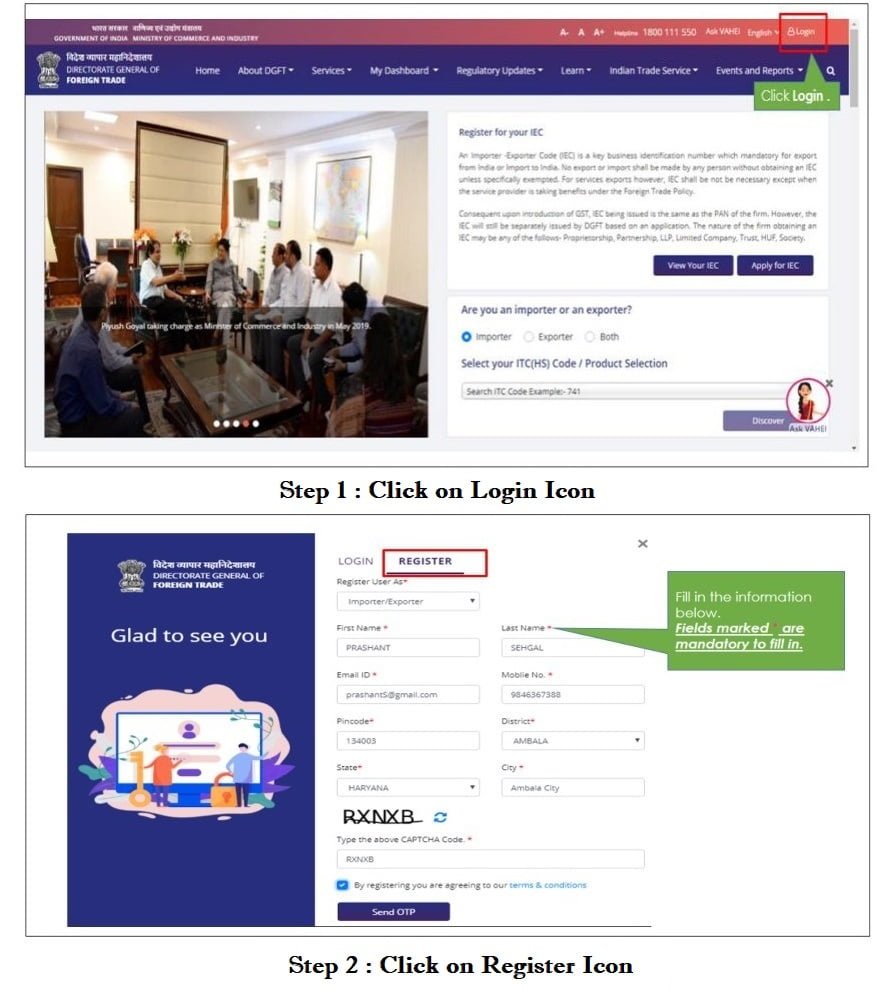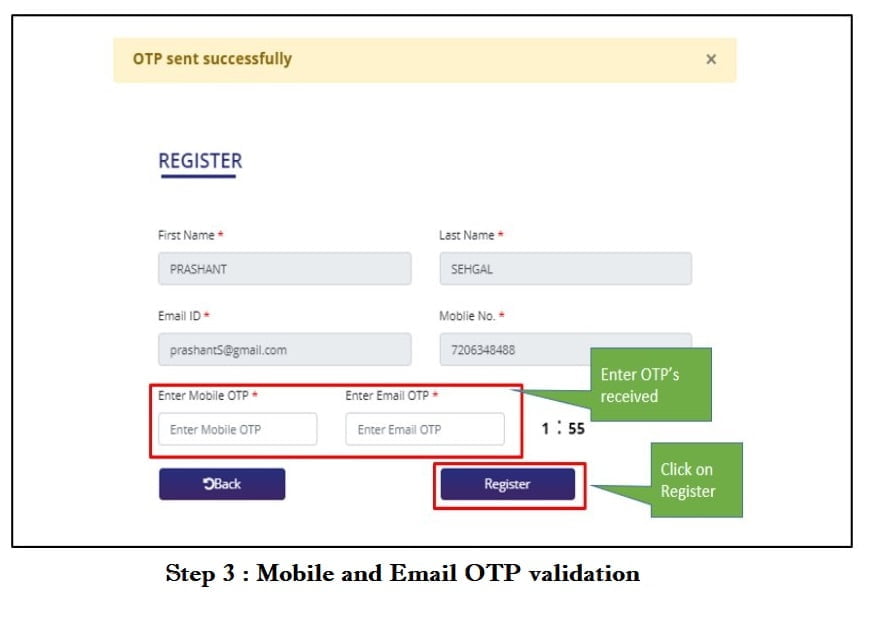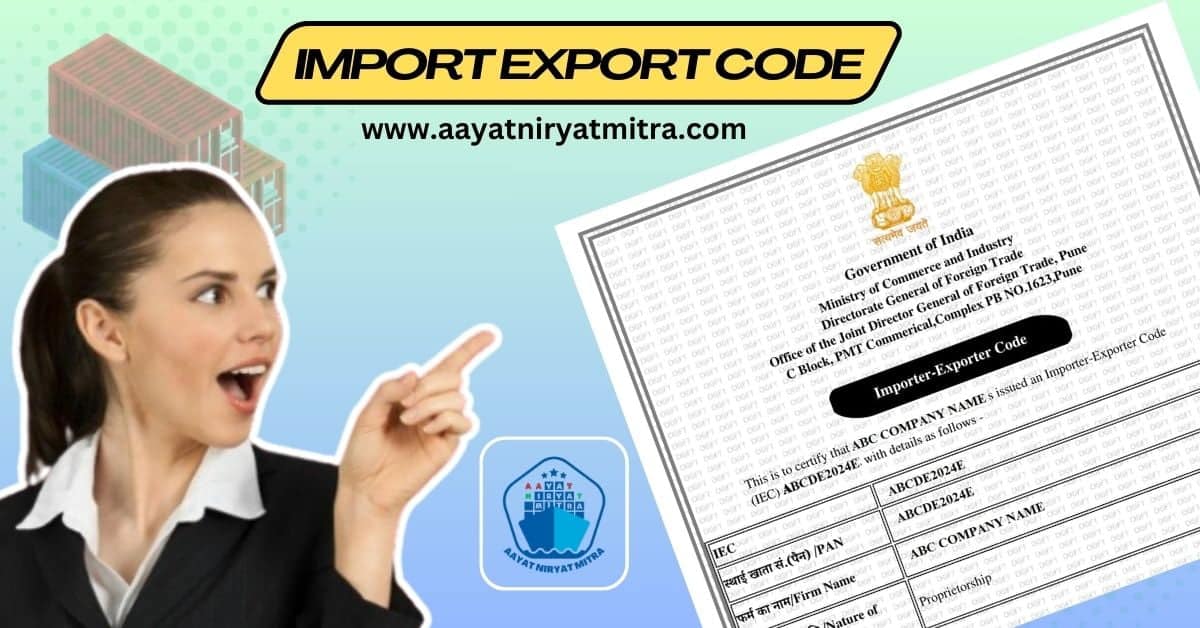An Import Export Code (IEC) is your key to trading goods internationally! This guide explains what an IEC is, why you need it, and how to get one easily. Get started on your import/export journey today!
Introduction:
In India, the Importer Exporter Code (IEC) is a unique 10-digit alphanumeric code issued by the Directorate General of Foreign Trade (DGFT), Ministry of Commerce and Industry. It is mandatory for any individual or business entity involved in importing or exporting goods and services to obtain an IEC.
- The Import Export Code or IEC is a 10-character alphanumeric code that is issued based on the PAN of an entity.
- IEC is also known as (Importer Exporter Code).
- An alphanumeric code known as the IEC is issued to entities, consisting of 10 digits and derived from their PAN.
- Based on the PAN of an entity, a 10-digit alphanumeric code called the IEC is issued.
- Issued based on the PAN of an entity, the IEC is a 10-digit code comprising alphanumeric characters.
- The IEC, a code consisting of 10 alphanumeric characters, is issued to entities using their PAN as a basis.
Uses of IEC or Import Export Code
- IEC is required to be quoted while clearing customs for all import and export transactions.
- It is also required for remitting money abroad for import or export transactions.
- IEC is used by the government to monitor foreign trade and to provide benefits under various schemes such as the Merchandise Exports from India Scheme (MEIS) and the Service Exports from India Scheme (SEIS).
- IEC is also required for opening a bank account in the name of the business or individual engaged in import or export activities.
The key point of IEC
- Legal Requirement: Obtaining an IEC is a legal requirement for conducting import/export activities in India. It enables individuals or businesses to engage in international trade legally.
- Expansion of Business: IEC opens up opportunities for businesses to expand their operations globally by participating in international trade. It allows them to import goods and services for domestic consumption or export them to foreign markets.
- Availing Government Benefits: Several government schemes, incentives, and benefits are available for businesses engaged in import/export activities. Having an IEC is a prerequisite for availing of such benefits and participating in various government programs.
- Establishing Credibility: An IEC serves as a form of authentication and establishes the credibility of a business entity. It enhances the reputation of the entity in international markets, making it easier to establish relationships with foreign suppliers, customers, and financial institutions.
- Easy Customs Clearance: An IEC simplifies the customs clearance process for imports and exports. It enables smooth documentation, allows for easier compliance with customs regulations, and reduces procedural delays.
- Online Application and Renewal: The IEC application and renewal process can be done online, which makes it convenient and time-saving for businesses. It eliminates the need for physical visits to government offices and streamlines the application procedure.
Regarding the benefits of the IEC abroad, it’s important to note that the IEC is specific to India and is primarily used for facilitating import/export activities within the country. However, having an IEC can indirectly benefit businesses engaging in international trade by establishing their legitimacy and compliance with Indian regulations. This, in turn, can facilitate smoother interactions with foreign partners, suppliers, and customers.
In summary, IEC is a crucial requirement for any business or individual looking to engage in import or export activities in India. It is a unique 10-digit alphanumeric code that is issued based on the PAN of an entity and is used for a variety of purposes, including customs clearance, remittance of money, and government benefits. If you are planning to engage in import or export activities in India, make sure to obtain an IEC to avoid any legal issues.
How to apply for IEC?
For apply a new IEC you need the Following Documents, PAN Card, Aadhar Card, Valid email ID, Aadhar linked Mobile no, and Current Account No.
Steps for IEC registration on the DGFT website.


After Successful OTP validation, your profile is now ready to apply to the Importer Exporter Code (IEC). Once the user registers and logs on to the DGFT Website.
a) Existing Importer/Exporter shall Link the IEC.
b) Importer/Exporter may Apply for IEC
Steps to link your old IEC on the DGFT website.
- Visit the DGFT website and login into the portal with your user ID and password.
- Proceed with the Link IEC process by clicking on the “Link IEC” button on the dashboard or from Menu
- “My Dashboard ->
- Importer Exporter Code (IEC) ->
- Link your profile to IEC”.
- Enter your IEC number which you want to link to your profile in the Importer Exporter Code field and then click on Link IEC.
- With a click of the Link IEC button, the IEC number is validated and the Digital signature window is opened in a Pop-Up.
- Select an Option and Proceed with Signing.
- Once the IEC is linked Importer/Exporter to the IEC. The user shall be able to
a) See the IEC Details.
b) Modify the IEC Details/Profile.
c) View and Print the IEC Certificate

